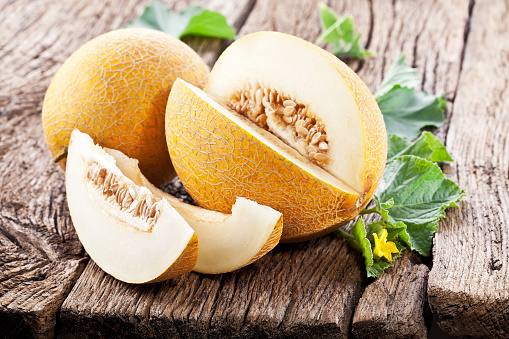Melons are some of the most beloved fruits around the globe, known for their refreshing, sweet, and juicy flavors that make them a favorite in hot summer months. While watermelon and cantaloupe might be the most commonly recognized melons, there are numerous other types, each with their unique flavors, colors, and textures. In this article, we explore the fascinating world of melons and the distinct characteristics that make each variety special.
1. Watermelon
Originating in Africa, the watermelon is perhaps the most iconic of all melons. Known for its striped green skin and vibrant red flesh, watermelons are incredibly hydrating (up to 92% water), hence the name. The sweet, slightly tart flavor and the refreshing juice it provides make it an ideal fruit for a hot summer day. There are several varieties of watermelons, ranging in size from small to large, and some types even have yellow or orange flesh.
2. Cantaloupe
Also known as muskmelon in some parts of the world, the cantaloupe is distinguished by its net-like skin and orange, sweet flesh. It is a rich source of Vitamin A and Vitamin C and has a unique musky, sweet flavor that pairs well with savory foods like prosciutto. Cantaloupes are perfect for salads, smoothies, or simply eaten on their own.
3. Honeydew
Honeydew melons, with their smooth pale green skin and light green flesh, offer a subtly sweet flavor. The texture is incredibly juicy and somewhat creamy. They are delicious eaten fresh or used in salads, desserts, or beverages. Honeydew is a great source of Vitamin C and potassium.
4. Galia Melon
The Galia melon is a hybrid variety, characterized by its netted skin and green flesh. It was developed in Israel in the 1970s. The taste is a blend of cantaloupe and honeydew – sweet and tropical. Galia melons are ideal for eating raw and can be a fantastic ingredient for fruit salads and refreshing drinks.
5. Crenshaw Melon
This hybrid melon is a cross between a Persian melon and a cantaloupe. The Crenshaw melon is large with a slightly elongated shape, with a skin that ranges from greenish to yellow upon ripening. The flesh is a rich salmon color, with a flavor that is both sweet and slightly spicy. It’s great for eating fresh or using in desserts.
6. Casaba Melon
A part of the muskmelon family, Casaba melons have a wrinkly, golden-yellow skin and pale green flesh. They are not as sweet as other melons but have a unique mild, cucumber-like flavor. Casaba melons are excellent for salads and stir-fries due to their crunchier texture.
7. Canary Melon
True to its name, the Canary melon has a bright yellow skin like a canary bird. The flesh is light to white, and the flavor is subtly sweet with a hint of tartness. Its texture is slightly crunchier compared to more common melons. Canary melons are fantastic in fruit salads and can be used in making sorbets or melon soups.
8. Santa Claus Melon
Also known as Christmas melon, this variety gets its name because it has a long shelf-life and can often last till Christmas. Santa Claus melons have a thick, green, striped outer rind and pale green to white inner flesh. The flavor is sweet but not overpowering and can be used in salads or served with cured meats.
In conclusion, the world of melons is much more diverse than most of us realize. Each type of melon brings its unique taste, texture, and nutritional profile to the table. So, the next time you’re at the supermarket or farmer’s market, don’t hesitate to try a new variety of melon. You might just discover a new favorite!
